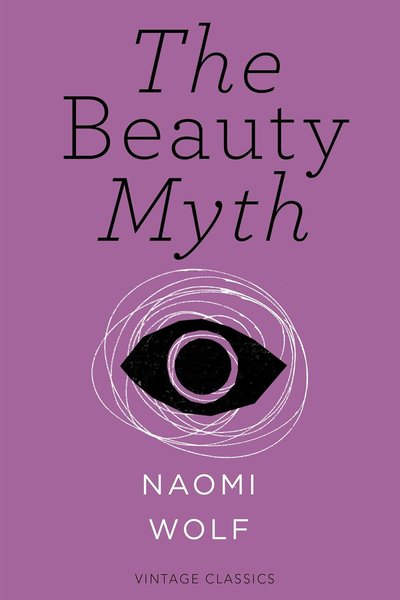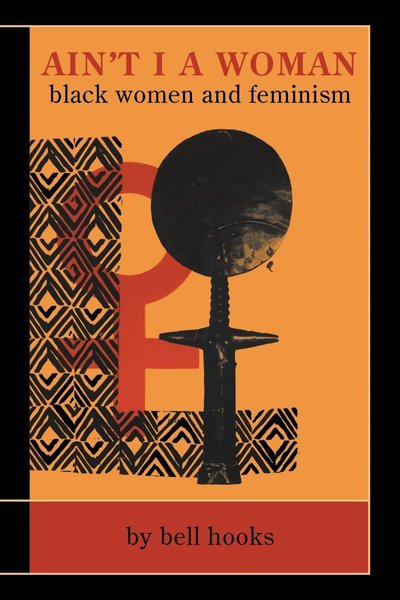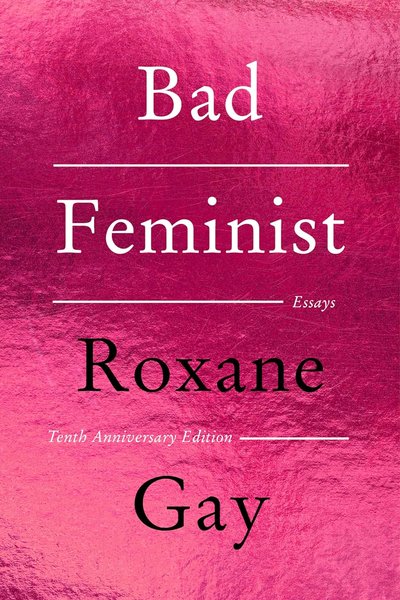The Beauty Myth
Exposes how beauty standards have become a new tool for controlling women, analyzing the impact of consumer culture on women's bodies and psyche.

📝 Book Review
“The Beauty Myth” is a groundbreaking critical work published by American author Naomi Wolf in 1990, offering a profound analysis of how the beauty industry has emerged as a new form of women’s oppression. This pioneering work reveals a seemingly harmless but actually highly destructive mechanism of social control. Through meticulous analysis and extensive empirical research, Wolf demonstrates how beauty standards have transformed from aesthetic preferences into systematic tools of power—tools that restrict women’s freedom and development in new ways even as women gain legal and political rights.
When examining the essence of the beauty myth, Wolf presents a remarkably insightful observation: at the precise historical moment when women were gaining more rights in legal and political spheres, the beauty myth emerged strategically as a new means of controlling women. She keenly observes that this control mechanism depletes women’s energy and resources by creating impossible beauty standards, forcing them to invest enormous amounts of time, money, and attention into appearance modification and maintenance, thereby weakening their competitiveness and influence in other areas.
This analysis reveals the strategic nature of the beauty myth—it is not a randomly occurring cultural phenomenon but a systematic response to the women’s liberation movement. Wolf’s insight demonstrates how patriarchal systems adapt and evolve, finding new ways to maintain control even as traditional forms of oppression become socially unacceptable.
Beauty as Currency and Economic Control
In analyzing the concept of beauty as currency, Wolf profoundly reveals how beauty becomes commodified and functions as a special “currency” for women in the workplace and society. She points out that this monetization process forces women to constantly invest in appearance, viewing beauty as a necessary condition for gaining social recognition and economic opportunities.
However, this currency’s value is entirely determined by others and can depreciate at any time, placing women in extremely unstable and passive positions. Wolf’s analysis reveals the brutality of this system: it not only requires women to pay enormous costs to maintain this “currency” while simultaneously guaranteeing no returns, thereby creating an endless cycle of consumption.
The economic implications of the beauty myth extend far beyond individual spending on cosmetics and procedures. Wolf demonstrates how beauty requirements create systematic barriers to women’s economic advancement, forcing them to allocate resources that could otherwise be invested in education, career development, or financial security. This creates a double bind where women must spend money to meet beauty standards in order to access economic opportunities, but this spending prevents them from accumulating the capital needed for true economic independence.
The Tyranny of Diet Culture
Wolf’s exploration of diet culture tyranny holds particular significance as she analyzes in detail how dieting culture, eating disorders, and pathological pursuit of the “perfect body” systematically damage women’s physical and mental health. She reveals how this culture romanticizes hunger and self-deprivation, stigmatizes women’s bodily needs, and maintains a massive diet industry by creating forever unsatisfiable body standards.
Wolf particularly emphasizes that this bodily control is not merely a matter of personal choice but a mechanism of social control that diverts women’s attention from more important social issues by making them focus on bodily “flaws.” Her analysis connects individual struggles with food and body image to broader patterns of women’s oppression, showing how the normalization of hunger among women serves political functions.
The diet industry, as Wolf reveals, profits from women’s insecurity while promoting products and practices that often worsen the very problems they claim to solve. This creates a cycle where women’s dissatisfaction with their bodies generates profits for industries that have a vested interest in maintaining that dissatisfaction. Wolf’s analysis exposes how the medicalization of normal female bodies through weight-loss culture creates new forms of social control disguised as health concerns.
Workplace Beauty Politics
At the level of social critique, Wolf provides in-depth analysis of beauty politics in the workplace. She reveals how “professional appearance” requirements disproportionately affect women, with these requirements often being more stringent and expensive than those for men. She further analyzes how beauty becomes a hidden standard for workplace advancement and how this standard intersects with sexual harassment and gender discrimination.
Wolf’s research demonstrates that beauty standards’ application in workplaces is not only unfair but illegal, yet this discrimination is often rationalized and hidden under the guise of “professional standards.” She exposes how subjective judgments about appearance become weapons of discrimination while maintaining plausible deniability for employers.
The professional beauty requirements that Wolf analyzes extend beyond mere grooming to encompass complex expectations about femininity, youth, and sexual attractiveness that have no relationship to job performance. These standards create additional financial burdens for women while establishing evaluation criteria that inevitably favor certain types of bodies and presentations over others, reinforcing broader systems of inequality based on race, class, age, and physical ability.
Industry Exploitation and Consumer Manipulation
Wolf’s critique of the beauty industry’s exploitative nature is equally profound and comprehensive. She analyzes how the multi-billion-dollar beauty industry maintains its profits by manufacturing insecurity and inferiority complexes, explores the commercial motivations behind the rise of plastic surgery and its enormous risks to women’s health, and deeply examines the psychological manipulation strategies in anti-aging product marketing, revealing how these products exploit women’s fears of aging for massive profits.
Wolf’s analysis not only exposes this industry’s deceptive nature but also reveals how it systematically undermines women’s economic status and mental health. She demonstrates how beauty companies create problems in order to sell solutions, how they use pseudo-scientific language to legitimate their products, and how they exploit women’s desire for control and self-improvement.
The beauty industry’s exploitation, as Wolf reveals, extends to the normalization of invasive and risky procedures, the promotion of products with harmful ingredients, and the creation of beauty “needs” that would have been incomprehensible to previous generations. This industrial complex profits from women’s insecurity while contributing to the very conditions that create that insecurity, establishing a self-perpetuating system of exploitation.
Media Complicity and Image Manipulation
The media’s complicit role in propagating the beauty myth is another focus of Wolf’s analysis. She thoroughly examines how media creates and maintains unrealistic beauty standards through airbrushing technology, selective reporting, and biased image presentation. Wolf points out that media is not merely a passive information transmitter but an active participant in shaping the beauty myth, maintaining existing power structures and commercial interests by constantly reinforcing specific beauty standards.
Wolf’s analysis of media representation reveals how the apparent diversity of images actually reinforces narrow beauty standards by presenting variations within extremely limited parameters. She demonstrates how media creates false choices and pseudo-empowerment while maintaining fundamental systems of control over women’s bodies and self-perception.
The media’s role in beauty myth propagation includes not only the images presented but also the narratives constructed around beauty, aging, and women’s worth. Wolf reveals how media coverage of beauty issues consistently frames them as individual rather than political problems, preventing collective recognition of shared experiences of oppression.
Impact on Feminist Movement and Theory
“The Beauty Myth’s” contributions to feminist movement and theoretical development are multifaceted and far-reaching. This book successfully brought body politics into mainstream feminist discussion, helping people recognize that body image and beauty standards are not merely personal issues but political ones. Wolf skillfully connected individual struggles with systematic oppression, providing countless women with new frameworks for understanding their experiences.
More importantly, this book directly inspired the later body positivity movement, providing theoretical foundations for challenging mainstream beauty standards and promoting body diversity. Wolf’s work helped establish the understanding that the personal is political when it comes to beauty and body image, contributing to broader feminist analysis of how patriarchal systems operate through apparently voluntary individual choices.
The book also sparked important debates about the complex relationships between beauty, choice, and empowerment. Wolf’s analysis prompted people to reconsider the boundaries between personal choice and social pressure, questioning the extent to which seemingly free choices might actually be constrained by social conditions. This book also advanced deep discussions about the relationship between feminism and beauty, challenging simple binary opposition concepts and encouraging exploration of more complex and nuanced understanding approaches.
Contemporary Relevance and Social Media
Although “The Beauty Myth” faced some important criticisms and reflections, the book’s influence remains profound and lasting. Scholars have pointed out that Wolf’s analysis focused too heavily on white middle-class women’s experiences, and this perspective’s limitations make her theoretical framework insufficient for fully explaining and encompassing other social groups’ experiences.
Some researchers have also questioned the accuracy of certain statistical data in the book, believing Wolf exaggerated the severity of problems in some areas. Additionally, some feminist scholars criticize Wolf for ignoring women’s agency, arguing that her analysis overemphasizes women’s role as victims without sufficiently acknowledging women’s resistance capabilities and creative coping strategies when facing beauty pressures.
However, in today’s social media era, “The Beauty Myth’s” analysis becomes even more relevant and urgent. The popularization of Instagram filters and photo-editing software makes unrealistic beauty standards more ubiquitous than ever. The increasing prevalence and younger demographics of plastic surgery confirm Wolf’s predictions about intensifying beauty pressures.
The proliferation of body shaming and cyberbullying creates an atmosphere even more hostile than the environment Wolf analyzed decades ago. Simultaneously, the rise of the body positivity movement as a response to these issues also proves the continued value and influence of Wolf’s analysis.
Theoretical Contributions and Analytical Framework
“The Beauty Myth” provides more than criticism of beauty culture in a specific historical period; it offers a continuously effective analytical framework for understanding and responding to constantly evolving beauty pressures and body politics. Wolf’s theoretical contributions include her analysis of how beauty standards function as a system of social control, her exploration of the economic dimensions of beauty requirements, and her revelation of how appearance-based oppression adapts to changes in women’s legal and political status.
Wolf’s framework helps us understand how seemingly progressive developments in beauty culture—such as expanded representation of different body types or ethnicities in advertising—can actually serve to modernize and strengthen rather than dismantle beauty-based systems of control. Her analysis provides tools for distinguishing between cosmetic changes and fundamental challenges to beauty culture’s oppressive functions.
The analytical framework Wolf establishes continues to be relevant for understanding new developments in beauty culture, from the rise of cosmetic procedures among teenagers to the emergence of beauty standards for men, demonstrating the adaptability and continued relevance of her insights.
Global Impact and Cultural Translation
While “The Beauty Myth” emerged from a specifically Western cultural context, its insights have proven relevant across different cultural settings, with the book being translated into numerous languages and adapted to local contexts worldwide. Wolf’s analysis of how beauty standards function as mechanisms of social control has resonated with women’s experiences across diverse cultural and economic contexts.
The globalization of Western beauty standards that Wolf analyzed has indeed occurred, often displacing local beauty traditions and creating new forms of cultural imperialism disguised as choice and modernity. Her framework helps understand how global beauty industries export not just products but entire systems of bodily control and economic exploitation.
Conclusion: Continuing Struggle for Bodily Autonomy
“The Beauty Myth” remains a crucial text for understanding how patriarchal systems adapt and evolve to maintain control over women’s bodies, minds, and economic resources. Wolf’s work reminds us that true women’s liberation requires not only legal and political rights protection but also challenging seemingly harmless but actually highly restrictive cultural norms and social expectations.
Through her systematic analysis of beauty culture’s political dimensions, Wolf demonstrated that the struggle for women’s equality must include resistance to all forms of bodily control and economic exploitation disguised as personal choice or aesthetic preference. Her insights continue to provide essential tools for recognizing and resisting new forms of beauty-based oppression as they emerge in different cultural and technological contexts.
The enduring power of “The Beauty Myth” lies in its revelation that beauty culture is not a natural or inevitable aspect of human society but a constructed system serving specific political and economic interests. By exposing these interests and their mechanisms of operation, Wolf provided a foundation for imagining and creating alternatives based on genuine choice, bodily autonomy, and human dignity rather than profit and control.
In an era of increasing technological sophistication in beauty marketing and ever-more invasive beauty procedures, Wolf’s call for critical analysis of beauty culture’s political functions remains as urgent as ever. Her work continues to inspire new generations of feminists to question, resist, and ultimately transform the systems that would reduce women’s worth to their appearance while diverting their energy from more meaningful and empowering pursuits.
Book Info
Related Topics
🛒 Get This Book
 Buy on Amazon
Buy on Amazon Related Books
Book Discussion
Share your thoughts and opinions on this book and exchange insights with other readers
Join the Discussion
Share your thoughts and opinions on this book and exchange insights with other readers
Loading comments...


